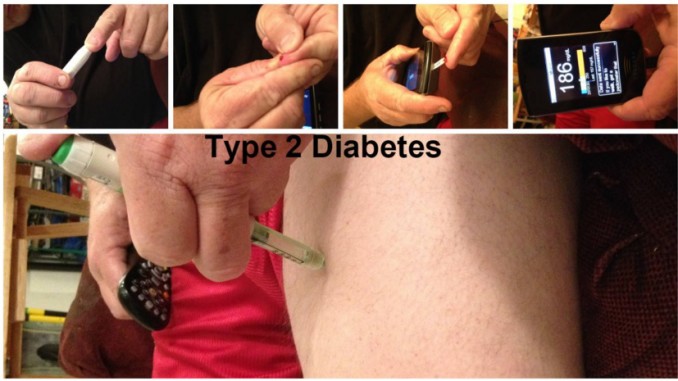
Breaking Down Diabetes
There is roughly a total of 29.1 million people of the population today that have diabetes. Of those people 8.1 million haven’t even been diagnosed (CDC, 2014). Just recently I have had both my dad and stepmom diagnosed with diabetes due to obesity. As well as my mom developed gestational diabetes while doing surrogacy pregnancies
Pregnant women who have never had diabetes before could develop high glucose levels resulting in gestational diabetes. According to 2014 analysis by Centers for Disease Control and  Prevention, the prevalence of gestational diabetes is as high as 9.2% (diabetes.org, 2014). Untreated or poorly treated diabetes can lead to a condition called macrosomia, or a “fat” baby. Babies born with this condition can develop health problems after birth, for example babies may be born with low glucose levels due to the baby’s pancreas creating extra insulin. Babies born with excess insulin become more at risk for childhood obesity and developing Type 2 diabetes through adulthood. Attached are pictures of my mom pregnant with the surrogate babies and after they are born. Both pregnancies of which she had gestational diabetes. You can clearly see the difference in size for her during pregnancy as well as baby after birth for each pregnancy of being treated for diabetes and not treated. Treating pregnant woman with gestational diabetes can be as simple as a special diet and scheduled physical activities or as more challenging like daily glucose testing and insulin.
Prevention, the prevalence of gestational diabetes is as high as 9.2% (diabetes.org, 2014). Untreated or poorly treated diabetes can lead to a condition called macrosomia, or a “fat” baby. Babies born with this condition can develop health problems after birth, for example babies may be born with low glucose levels due to the baby’s pancreas creating extra insulin. Babies born with excess insulin become more at risk for childhood obesity and developing Type 2 diabetes through adulthood. Attached are pictures of my mom pregnant with the surrogate babies and after they are born. Both pregnancies of which she had gestational diabetes. You can clearly see the difference in size for her during pregnancy as well as baby after birth for each pregnancy of being treated for diabetes and not treated. Treating pregnant woman with gestational diabetes can be as simple as a special diet and scheduled physical activities or as more challenging like daily glucose testing and insulin.
 Type 1 diabetes, preciously known as juvenile diabetes, is typically diagnosed in children or young adults. Though diabetes is common only 5% of people have Type 1. With Type 1 diabetes the pancreas does not produce any insulin therefore cannot properly breakdown sugars and starches, which the body uses for energy (diabetes.org, 2014). In most cases of Type 1 diabetes, most people must inherit risk factors from both parents (National Institute of Health, May 2014). Having Type 1 isn’t curable but can be managed through blood glucose control and insulin management, exercise, nutrition, and support. Living with Type 1 can be tough but with proper care you can still do anything.
Type 1 diabetes, preciously known as juvenile diabetes, is typically diagnosed in children or young adults. Though diabetes is common only 5% of people have Type 1. With Type 1 diabetes the pancreas does not produce any insulin therefore cannot properly breakdown sugars and starches, which the body uses for energy (diabetes.org, 2014). In most cases of Type 1 diabetes, most people must inherit risk factors from both parents (National Institute of Health, May 2014). Having Type 1 isn’t curable but can be managed through blood glucose control and insulin management, exercise, nutrition, and support. Living with Type 1 can be tough but with proper care you can still do anything.
Like with Type 1 diabetes, Type 2 can be a journey also. Type 2 is the most common form of diabetes. This form of diabetes causes the body to not use insulin properly, also known as insulin resistance. This is when your pancreas makes extra insulin but over time your pancreas can’t make enough insulin to keep up with normal glucose levels. Dealing with my parents battling this type they find Type 2 diabetes a balancing act between keeping a normal blood sugar level and healthier diet. Type 2 diabetes is treated and controlled with lifestyle changes, such as nutrition and exercise. In addition, some people still need oral medications or insulin. Another diagnostic method doctor’s use is continuously checking the A1C levels. According to the National Institute of Health normal A1C levels are below 5.7. Results between 5.7 and 6.4 percent are considered to be prediabetes, which indicates high risk of developing Type 2 diabetes (National Institute of Health, March 2014).
In conclusion with diet, exercise, and continuous monitoring you can help to prevent gestational and Type 2 diabetes. However with Type 1 you can’t prevent it but you can treat it.
Written by: Sheena Canziani
References
American Diabetes Association
Retrieved from http://www.diabetes.org
Centers for Disease Control and Prevention, 2014
2014 National Diabetes Statistics Report
Retrieved from http://www.cdc.gov/diabetes/data/statistics/
National Institute of Health, March 2014
Retrieved from http://niddk.nih.gov
Publication number 14-7816





